Balkinization
an unanticipated consequence of
Jack M. Balkin
Balkinization Symposiums: A Continuing List
E-mail:
Jack Balkin:
jackbalkin at yahoo.com
Bruce Ackerman
bruce.ackerman at yale.edu
Ian Ayres
ian.ayres at yale.edu
Corey Brettschneider
corey_brettschneider at brown.edu
Mary Dudziak
mary.l.dudziak at emory.edu
Joey Fishkin
joey.fishkin at gmail.com
Heather Gerken heather.gerken at yale.edu
Abbe Gluck abbe.gluck at yale.edu
Mark Graber
mgraber at law.umaryland.edu
Stephen Griffin
sgriffin at tulane.edu
Jonathan Hafetz
jonathan.hafetz at shu.edu
Jeremy Kessler
jkessler at law.columbia.edu
Andrew Koppelman
akoppelman at law.northwestern.edu
Marty Lederman
msl46 at law.georgetown.edu
Sanford Levinson
slevinson at law.utexas.edu
David Luban
david.luban at gmail.com
Gerard Magliocca
gmaglioc at iupui.edu
Jason Mazzone
mazzonej at illinois.edu
Linda McClain
lmcclain at bu.edu
John Mikhail
mikhail at law.georgetown.edu
Frank Pasquale
pasquale.frank at gmail.com
Nate Persily
npersily at gmail.com
Michael Stokes Paulsen
michaelstokespaulsen at gmail.com
Deborah Pearlstein
dpearlst at yu.edu
Rick Pildes
rick.pildes at nyu.edu
David Pozen
dpozen at law.columbia.edu
Richard Primus
raprimus at umich.edu
K. Sabeel Rahmansabeel.rahman at brooklaw.edu
Alice Ristroph
alice.ristroph at shu.edu
Neil Siegel
siegel at law.duke.edu
David Super
david.super at law.georgetown.edu
Brian Tamanaha
btamanaha at wulaw.wustl.edu
Nelson Tebbe
nelson.tebbe at brooklaw.edu
Mark Tushnet
mtushnet at law.harvard.edu
Adam Winkler
winkler at ucla.edu
Compendium of posts on Hobby Lobby and related cases
The Anti-Torture Memos: Balkinization Posts on Torture, Interrogation, Detention, War Powers, and OLC
The Anti-Torture Memos (arranged by topic)
Recent Posts
Who Is The Audience For This Book?
Just A Few Blogs
ACS Blog
Alas, a Blog
Althouse
Arts and Letters Daily
Atrios (Eschaton)
Bill of Health
Buzzflash.com
Buzz Machine
Cato at Liberty
Juan Cole (Informed Comment)
Concurring Opinions
The Constitution in 2020
Corrente
Crooked Timber
Daily Howler
Daily Kos
Dana Boyd
Brad DeLong
Digby (Hullabaloo)
Discriminations
Daniel Drezner
Kevin Drum (Mother Jones)
Electrolite
En Banc
Eunomia (Daniel Larison)
Fafblog
Michael Froomkin (Discourse.net)
GovLab (Beth Noveck)
Rick Hasen (Election Law)
History News Network
How Appealing
Ignatz (Sam Heldman)
The Importance of (Ernie Miller)
Infolaw
Instapundit
International Economic Law and Policy Blog
IntLawGrrls
Jacob Levy
Jesus' General
Jurisdynamics
The Kitchen Cabinet
Mark Kleiman
Law Blog Central
Larry Lessig
Lawyers, Guns and Money
Liberal Oasis
Brian Leiter's Law School Reports
The Leiter Reports
Marginal Revolution
Megan McArdle
Memeorandum
Metafilter
Mirror of Justice
The New Republic
Newseum
No More Mister Nice Blog
Brendan Nyhan
Opinio Juris
Orcinus
The Originalism Blog
Pandagon
Passport (Foreign Policy)
Overcoming Bias
Political Animal (Washington Monthly)
Political Theory Daily Review
Political Wire (Taegan Goddard)
The Poor Man
Virginia Postrel
Prawfsblawg
Public Reason
Jonathan Rauch
Raw Story
Redstate
ReligiousLeftLaw.com
Reporters Committee For Freedom of the Press
Reproductive Rights Blog
Rothman's Roadmap to the Right of Publicity
SCOTUS Blog
Seeing the Forest
Clay Shirky
The Shifted Librarian
The Situationist
Larry Solum (Legal Theory)
Andrew Sullivan
Talking Points Memo
Talk Left
Tapped
Tbogg
TechPresident
The Paper Chase (Jurist)
Tom Paine
Tom Tomorrow (This Modern World)
Eve Tushnet
Uggabugga
University of Chicago Law School Faculty Blog
Unqualified Offerings
The Volokh Conspiracy
War and Piece (Laura Rozen)
Wampum
Oliver Willis
Wonkette
Written Description
Matthew Yglesias
Yin
Your Choice of Feeds
1. XML
powered by
2. Atom Feed
3. RSS 2.0
Who Is The Audience For This Book?
Guest Blogger
For the Balkinization symposium on Zachary Price, Constitutional Symmetry: Judging in a Divided Republic (Cambridge University Press, 2024). In Constitutional
Symmetry: Judging in a Divided Republic,
Zachary Price captures the sense that I suspect that many of us feel about
the current reality of politics in the United States. In particular, he focuses on the undoubted
fact that the polity is suffering from a kind of polarization that rationally
leads many—perhaps most—thoughtful observers to an increasing sense of
hopelessness about the ability of those purportedly “leading” the country to confront
the pressing challenges facing us. Some
of these, such as climate change, are potentially existential. And, of course, the election of a
pathological lying narcissistic grifter as President does not help. As an earlier theorist of politics once asked,
“What is to be done?” We know what
Lenin’s answer was, and few of us are really happy to follow his model. But the question remains all too powerful. Professor
Price, perhaps reflecting his position as a professor of constitutional law, offers
what to many might seem a peculiar answer to the question. That is, he turns away from my own obsession
with constitutional reform, which to most people I know seems too radical or
else simply impossible. But he also pays
no real attention to what one might do with regard to Congress and presidents
with regard to their own revealed deficiencies.
Instead, he focuses exclusively on what the Supreme Court might do to
help. I will turn presently to his overarching
suggestion. It is worth noting, though,
the degree to which he, like most legal academics, almost grotesquely
overemphasizes the importance of the Supreme Court. Whether by offering excessive praise, as many
liberals did with regard to the so-called Warren Court, or perhaps justified
condemnation, as with the present majority, one might well be exaggerating the
actual role of the Court. The lamentably late Fred Schauer
wrote a brilliant “Foreword” to the Harvard Law Review almost two
decades ago in which he noted that the Supreme Court in fact has relatively
little to say about the issues that most Americans actually care about and keep
them up at night with worry. This does
not require gainsaying the genuine importance of, say, abortion, and
affirmative action, but they are nowhere near the top of the list of what
concern most Americans—and even most legal academics in their ordinary
lives. I am certainly not arguing that
the Court is truly irrelevant, that we can safely ignore it. Like many of my liberal colleagues, I am
almost physically repulsed by reading its contemporary decisions and think that
they are, as a whole, harmful for the future of our country. The enforcement of the
judicially-manufactured “major questions” doctrine and the reversal of Chevron
may indeed make it more difficult for the Environmental Protection Agency
to stave off additional global warming and condemn our children and
grandchildren to a perilous future. And
its decision granting Donald Trump basic immunity for any crimes he may commit
as President was outrageous. Granting
this, it remains the case that the principal problem is the inability of
Congress to act, even if we did not have a sociopathic president who believes,
for example, that climate change is a hoax.
So, to some extent, a single-minded focus on the Supreme Court as the
central source of our present dilemmas—or a potential solution to them—reminds
one of the drunk who looks for his missing car keys under the street lamp
because the light is better there even though the car was parked many yards away
in the dark. But let us
assume, as is only fair, that the Supreme Court does deserve a share of
the blame for where we are today. For
good reason, Professor Price is no admirer of several recent decisions of the
Court, including those involving the “major questions” doctrine and, even more,
the remarkably obtuse decisions involving the alleged meaning of the Second
Amendment in the 21st century.
It is not so much that he necessarily objects to the results of the
cases; rather, he denounces the tone of the opinions. In particular, he believes that they were
written without a sufficient attention to providing what he calls “symmetry,”
which in this context means that even the losers should be able to believe that
they in fact scored some significant gains, even if only in the future. An “asymmetric” opinion, on the other hand,
would generate only delighted winners and frightened losers. One might well believe that we would, overall, be better off if his
suggestions for reforming the way the Court thinks and explains itself were
adopted. What, after all, could be the
harm? No doubt the
other participants in this symposium will address at greater length the
assumptions underlying Price’s calls for “symmetry.” Many readers, including
myself, are likely to be reminded of Herbert Wechsler’s valiant (and ultimately
unpersuasive) attempts to promote “neutral principles” as the grounding for
judicial decisions. There is one
important difference, however. “Symmetry”
may differ from “neutrality” inasmuch as Price really appears to wish from
judges a sophisticated understanding of the actualities of politics. They should read more newspapers and even the
works of political scientists. Wechsler,
on the other hand, appeared to invite justices to read more philosophy and to
wrestle with complicated notions of “neutrality” in constructing a legal
regime. I will let others explore these particular
issues. Rather, what I want to address in
the remainder of my remarks is the question of audience. Who is supposed to read this book, with
what anticipated results? The book is
obviously published by a distinguished university press and written in a
standard-form academic style, with plenty of welcome footnotes and “insider”
language. And the price, $39.99 even in paperback
(let alone the $110 in hardback!) assures, as a practical matter, that it will
get relatively few readers outside the academy.
But assume for the moment that it becomes an academic “best seller,”
which, practically speaking, might mean the sale of a couple thousand copies
and even assignment to some students in advanced seminars on the Supreme Court
today. So what? Can anyone seriously believe that our views
genuinely matter with regard to the shaping of American politics or, more
particularly, the behavior of the Supreme Court, which is, after all, the topic
of the book? In the probably mythic “good old
days,” Felix Frankfurter and other justices might have waited breathlessly for
the November issue of the Harvard Law Review and the wisdom imparted by
the denizens of the academy chosen to write the Foreword to the review
of the previous year’s cases. For all we
know, they might even have paid attention to the de facto “grades” they
received from student editors who offered their own commentaries on many of the
cases decided by the Court. Moreover, it
was assumed that that essay would also be required reading by the professoriate
and perhaps even provoke a genuine debate among constitutional law mavens. That was certainly true of Wechsler’s essay,
even though it was “merely” the Holmes Lecture at the Harvard School, funded by
the Holmes Devise that the Justice left to the United States on his death. Those days are gone. As Mark Tushnet suggested some years ago, the
Forewords are of diminishing importance, as a practical matter, even if
it remains a professional laurel to be asked to write one. It is not unknown for professors of
constitutional law to admit that they have not yet made time to read one or
another recent foreword. This is true as
well with regard to every article or book that is being published in “the
field.” All of us (within the legal
academy) live in a Darwinian universe where too many manuscripts compete for
our scarce attention and consequently remain unread. As authors ourselves, many of us resonate to
David Hume’s fear that his own work would die stillborn at the press. But, as already suggested, what difference
would it make if Professor Price’s were one of the few books that really did
survive the Darwinian cut and become both much-discussed and embraced by legal
academics? Does anyone seriously believe that
the Supreme Court, which is, after all, the focus of his critique and addressee
regarding the desirability of adopting his theory of “symmetry” (fearful or
otherwise), cares about the musing of academics, wherever they might teach and
whatever we in the academy might think of the quality of the arguments
presented? Unless members of the Court
themselves read the book and, more importantly, agree with the critique and,
finally, agree collectively to mend their errant ways, nothing will
change. It is like signing open
letters, which some of us have done, to Benjamin Netanyahu or even Vladimir
Putin objecting to their truly outrageous behavior and demanding that they mend
their ways. Legal academics are perhaps
becoming ever more critical and alienated from their profession. The New York Times ran an article
several months ago quoting a number of academics about their anguish about
their vocation as teachers. What, after
all, does it mean to “teach” material that one has increasingly disrespect
for? The American Bar Association, in
its Code of Professional Responsibility, suggests that lawyers are under a duty
to promote respect for law and, more particularly, for the judges who are
deemed to have a particularly important role in such declarations. Many of us have increasing doubts about
living up to any such responsibilities.
Professor of political science who teach about Congress or the presidency
have no duty to cheerlead for “their” institutions. But the legal academy is different. We are, after all, preparing not only
citizens, but also practitioners who are often described as “officers of the
Court” with suitable respect for all elements of the legal order. But what happens inside the enclosed world of
the legal academy doesn’t change things in the broader world outside. All of the railing against Donald J. Trump by
an overwhelmingly liberal academy—where even the “conservatives” have the
integrity to be “anti-Trump”—makes no ascertainable difference. During Brett Kavanaugh’s hearing
before the Senate Judiciary Committee, it was often suggested that he was
really speaking to an “audience of one.”
That is, would his patron, Donald J. Trump, be sufficiently impressed by
his spirit of aggressive response to his critics to forego withdrawing what in
other circumstances might have appeared to be a doomed nomination. Kavanaugh obviously succeeded splendidly, and
he is now Justice Kavanaugh. So perhaps
we should think, with regard to Constitutional Symmetry, of generating
an “audience of nine” that would not only read the book but also recognize the
error of their misbegotten ways and vow to change their behavior. Why would anyone seriously credit this as a
possibility? Moreover, why would one think that
those who appoint judges and are tasked with confirming them would sign on to
Price’s program if they believed if had genuine teeth? Donald Trump’s most brilliant political move
in his 2016 campaign was to publish a “list” of potential nominees and to
assure his MAGA base that he would transform what he freely described as an
intellectually and politically corrupt judiciary by drawing judges from the
list. He of course won and, whatever
else one might say about him, more than lived up to his promise. But, of course, his success would have been
far more limited had Mitch McConnell not announced, immediately after the death
of Antonin Scalia in February 2016, that he would simply refuse even to
consider any nominee put forth by President Obama. For reasons known only to himself, Obama
apparently thought McConnell was kidding and chose to nominate Merrick Garland,
a fine man and judge who no one outside the beltway had ever heard of or cared
about, and McConnell kept his promise.
Hillary Clinton made her own contribution by basically ignoring the
judiciary in her campaign, apparently believing that it went without saying
that she would make fine appointments.
And then, of course, McConnell, who has publicly proclaimed that his
major public service was to help pack the entire federal judiciary with
vehement conservatives, took advantage of Ruth Bader Ginsburg’s own death in
September 2016, some two months before the election, to ram through the
nomination of Amy Coney Barrett. The
current President and Senate majority would roar in disbelief at the suggestion
that they should seek out justices who would take care to provide “symmetry” in
their opinions. That is not what the
judges are being hired to do. They are,
instead, the agents of a powerful political movement that is trying to solidify
its hold on power unto future generations. So is it really thinkable that
Justices Gorsuch, Kavanaugh, and Barrett, not to mention the even more
egregious Clarence Thomas and Samuel Alito, will both read Price’s books and in
essence agree that they should mend their ways?
To believe this is to engage in academic fantasy, at all levels, not
least because the current majority no doubt believes, altogether sincerely,
that they are indeed “oracles of the law.”
I have elsewhere argued that the current majority is a parody of a
“Dworkinian” court. He famously
disdained “politics” in favor of the Court as the almost unique “forum of
principle.” And he created the literally
fantastic figure of Justice Hercules, who, after careful study of all relevant
materials, would issue uniquely correct “right answers” that would pay no
attention to their actual consequences or, God forbid, manifest evidence of
“compromise.” I have no doubt at all
that most members of the majority all view themselves as Herculean figures, and
both Alito and Thomas in particular seem proud of the extent to which they are
indifferent to the actual consequences of their views. Dworkin would be appalled by this, because of
his own politics, but I believe that the analogy is justified. I have also written elsewhere of a
conversation involving Justice Scalia when he visited the University of Texas
Law School in 1993 in order to swear in new members of the Texas Supreme
Court. As is typical, the Law School
treated the visit as the equivalent of the appearance of royalty, with a
suitable luncheon. I was seated at the
table with Scalia and his former University of Chicago colleague Douglas
Laycock. Doug was already, more than
thirty years ago, the leading American legal academic on the subject of
religious freedom. He mentioned that he
was about to publish a long piece in The Supreme Court Review attacking
Scalia’s opinion in Smith v. Oregon, which many analysts viewed as
basically reading the Free Exercise Clause out of the Constitution. Scalia had earlier in the conversation
indicated that he, like all of the other justices, was just too busy to keep up
on academic literature. But one might
still have expected him to acknowledge his former association, and friendship,
with Laycock by saying something like “I
look forward to reading it.” There was
not such comment. It appeared obvious
that becoming a Justice, to Scalia, meant not only that one never had to say
“I’m sorry,” but also that one really was under no obligation to acknowledge or
read one’s critics. (He would later say
that he made of a point of not reading the Washington Post, which he no doubt
regarded as simply a left-wing tract.) That is the reality within
which we, as legal academics live. We
are paid very well to read and think about truly important issues, not to mention
our responsibility to introduce those issues, and their potential resolution,
to youngsters who wish to become lawyers.
I very much enjoy the life I’ve been privileged to lead. But that does not translate into genuine
influence, save in extremely exceptional cases.
Gerry Rosenberg wrote a famous book, The Hollow Hope, chastising
reformers for believing that they could achieve long-term gains through
litigation rather than going through the hard work of political persuasion and
creation of enduring alliances among the public at large. So, alas, might one write a modern Hollow Hope about books like Price,
whatever one thinks of the substance of his argument. Donald Trump and the sensibility represented
by the contemporary majority will not be defeated—or even significantly
tempered—by what many of us would think of as persuasive advocacy. Most of us, including myself, have no real
political talents with regard, for example, to organizing a mass movement. I have, for at least two decades, been a
vigorous critic of what I believe to be a perhaps fatally deficient
Constitution and advocate for a new constitutional convention. I am, perhaps, (fairly) regarded as a crank
because I’ve in fact persuaded so few people to support a convention even if,
increasingly, they are inclined to agree that the Constitution has some deep
problems that need fixing. Price is far
too young to be regarded as a crank. But
he should not be surprised if his book gains absolutely no purchase among the
very small group of people for whom its argument might be truly relevant.
Posted
9:30 AM
by Guest Blogger [link]
Books by Balkinization Bloggers

Gerard N. Magliocca, The Actual Art of Governing: Justice Robert H. Jackson's Concurring Opinion in the Steel Seizure Case (Oxford University Press, 2025)

Linda C. McClain and Aziza Ahmed, The Routledge Companion to Gender and COVID-19 (Routledge, 2024)

David Pozen, The Constitution of the War on Drugs (Oxford University Press, 2024)

Jack M. Balkin, Memory and Authority: The Uses of History in Constitutional Interpretation (Yale University Press, 2024)
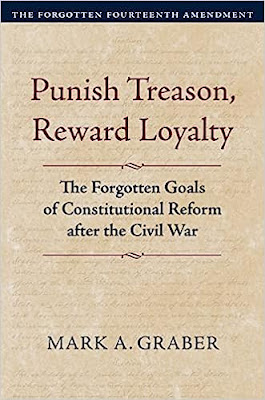
Mark A. Graber, Punish Treason, Reward Loyalty: The Forgotten Goals of Constitutional Reform after the Civil War (University of Kansas Press, 2023)
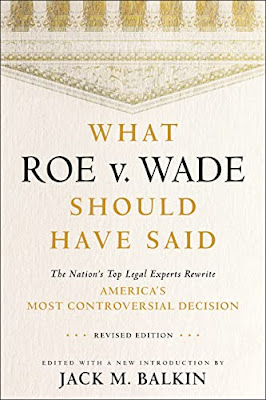
Jack M. Balkin, What Roe v. Wade Should Have Said: The Nation's Top Legal Experts Rewrite America's Most Controversial Decision - Revised Edition (NYU Press, 2023)

Andrew Koppelman, Burning Down the House: How Libertarian Philosophy Was Corrupted by Delusion and Greed (St. Martin’s Press, 2022)

Gerard N. Magliocca, Washington's Heir: The Life of Justice Bushrod Washington (Oxford University Press, 2022)
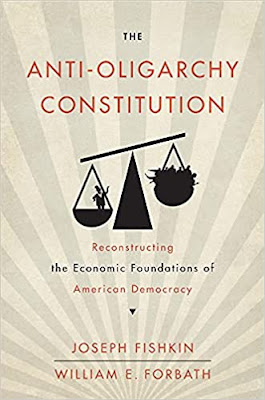
Joseph Fishkin and William E. Forbath, The Anti-Oligarchy Constitution: Reconstructing the Economic Foundations of American Democracy (Harvard University Press, 2022)
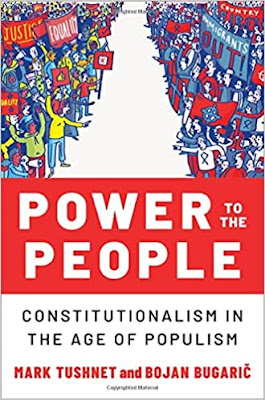
Mark Tushnet and Bojan Bugaric, Power to the People: Constitutionalism in the Age of Populism (Oxford University Press 2021).

Mark Philip Bradley and Mary L. Dudziak, eds., Making the Forever War: Marilyn B. Young on the Culture and Politics of American Militarism Culture and Politics in the Cold War and Beyond (University of Massachusetts Press, 2021).

Jack M. Balkin, What Obergefell v. Hodges Should Have Said: The Nation's Top Legal Experts Rewrite America's Same-Sex Marriage Decision (Yale University Press, 2020)

Frank Pasquale, New Laws of Robotics: Defending Human Expertise in the Age of AI (Belknap Press, 2020)

Jack M. Balkin, The Cycles of Constitutional Time (Oxford University Press, 2020)

Mark Tushnet, Taking Back the Constitution: Activist Judges and the Next Age of American Law (Yale University Press 2020).

Andrew Koppelman, Gay Rights vs. Religious Liberty?: The Unnecessary Conflict (Oxford University Press, 2020)

Ezekiel J Emanuel and Abbe R. Gluck, The Trillion Dollar Revolution: How the Affordable Care Act Transformed Politics, Law, and Health Care in America (PublicAffairs, 2020)

Linda C. McClain, Who's the Bigot?: Learning from Conflicts over Marriage and Civil Rights Law (Oxford University Press, 2020)
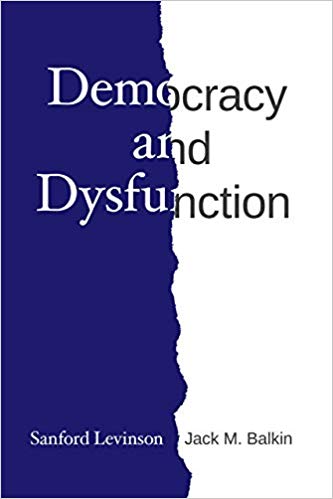
Sanford Levinson and Jack M. Balkin, Democracy and Dysfunction (University of Chicago Press, 2019)

Sanford Levinson, Written in Stone: Public Monuments in Changing Societies (Duke University Press 2018)

Mark A. Graber, Sanford Levinson, and Mark Tushnet, eds., Constitutional Democracy in Crisis? (Oxford University Press 2018)

Gerard Magliocca, The Heart of the Constitution: How the Bill of Rights became the Bill of Rights (Oxford University Press, 2018)

Cynthia Levinson and Sanford Levinson, Fault Lines in the Constitution: The Framers, Their Fights, and the Flaws that Affect Us Today (Peachtree Publishers, 2017)

Brian Z. Tamanaha, A Realistic Theory of Law (Cambridge University Press 2017)

Sanford Levinson, Nullification and Secession in Modern Constitutional Thought (University Press of Kansas 2016)

Sanford Levinson, An Argument Open to All: Reading The Federalist in the 21st Century (Yale University Press 2015)

Stephen M. Griffin, Broken Trust: Dysfunctional Government and Constitutional Reform (University Press of Kansas, 2015)

Frank Pasquale, The Black Box Society: The Secret Algorithms That Control Money and Information (Harvard University Press, 2015)

Bruce Ackerman, We the People, Volume 3: The Civil Rights Revolution (Harvard University Press, 2014)
Balkinization Symposium on We the People, Volume 3: The Civil Rights Revolution

Joseph Fishkin, Bottlenecks: A New Theory of Equal Opportunity (Oxford University Press, 2014)

Mark A. Graber, A New Introduction to American Constitutionalism (Oxford University Press, 2013)

John Mikhail, Elements of Moral Cognition: Rawls' Linguistic Analogy and the Cognitive Science of Moral and Legal Judgment (Cambridge University Press, 2013)

Gerard N. Magliocca, American Founding Son: John Bingham and the Invention of the Fourteenth Amendment (New York University Press, 2013)

Stephen M. Griffin, Long Wars and the Constitution (Harvard University Press, 2013)

Andrew Koppelman, The Tough Luck Constitution and the Assault on Health Care Reform (Oxford University Press, 2013)

James E. Fleming and Linda C. McClain, Ordered Liberty: Rights, Responsibilities, and Virtues (Harvard University Press, 2013)
Balkinization Symposium on Ordered Liberty: Rights, Responsibilities, and Virtues

Andrew Koppelman, Defending American Religious Neutrality (Harvard University Press, 2013)

Brian Z. Tamanaha, Failing Law Schools (University of Chicago Press, 2012)

Sanford Levinson, Framed: America's 51 Constitutions and the Crisis of Governance (Oxford University Press, 2012)

Linda C. McClain and Joanna L. Grossman, Gender Equality: Dimensions of Women's Equal Citizenship (Cambridge University Press, 2012)

Mary Dudziak, War Time: An Idea, Its History, Its Consequences (Oxford University Press, 2012)

Jack M. Balkin, Living Originalism (Harvard University Press, 2011)

Jason Mazzone, Copyfraud and Other Abuses of Intellectual Property Law (Stanford University Press, 2011)

Richard W. Garnett and Andrew Koppelman, First Amendment Stories, (Foundation Press 2011)

Jack M. Balkin, Constitutional Redemption: Political Faith in an Unjust World (Harvard University Press, 2011)

Gerard Magliocca, The Tragedy of William Jennings Bryan: Constitutional Law and the Politics of Backlash (Yale University Press, 2011)

Bernard Harcourt, The Illusion of Free Markets: Punishment and the Myth of Natural Order (Harvard University Press, 2010)

Bruce Ackerman, The Decline and Fall of the American Republic (Harvard University Press, 2010)
Balkinization Symposium on The Decline and Fall of the American Republic

Ian Ayres. Carrots and Sticks: Unlock the Power of Incentives to Get Things Done (Bantam Books, 2010)

Mark Tushnet, Why the Constitution Matters (Yale University Press 2010)
Ian Ayres and Barry Nalebuff: Lifecycle Investing: A New, Safe, and Audacious Way to Improve the Performance of Your Retirement Portfolio (Basic Books, 2010)
.jpg)
Jack M. Balkin, The Laws of Change: I Ching and the Philosophy of Life (2d Edition, Sybil Creek Press 2009)

Brian Z. Tamanaha, Beyond the Formalist-Realist Divide: The Role of Politics in Judging (Princeton University Press 2009)
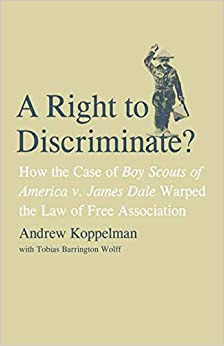
Andrew Koppelman and Tobias Barrington Wolff, A Right to Discriminate?: How the Case of Boy Scouts of America v. James Dale Warped the Law of Free Association (Yale University Press 2009)

Jack M. Balkin and Reva B. Siegel, The Constitution in 2020 (Oxford University Press 2009)
Heather K. Gerken, The Democracy Index: Why Our Election System Is Failing and How to Fix It (Princeton University Press 2009)

Mary Dudziak, Exporting American Dreams: Thurgood Marshall's African Journey (Oxford University Press 2008)

David Luban, Legal Ethics and Human Dignity (Cambridge Univ. Press 2007)

Ian Ayres, Super Crunchers: Why Thinking-By-Numbers is the New Way to be Smart (Bantam 2007)

Jack M. Balkin, James Grimmelmann, Eddan Katz, Nimrod Kozlovski, Shlomit Wagman and Tal Zarsky, eds., Cybercrime: Digital Cops in a Networked Environment (N.Y.U. Press 2007)
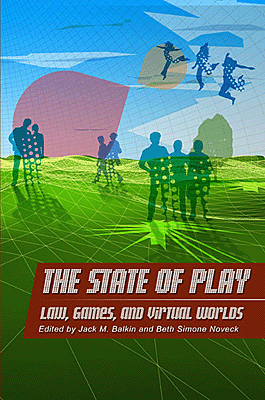
Jack M. Balkin and Beth Simone Noveck, The State of Play: Law, Games, and Virtual Worlds (N.Y.U. Press 2006)

Andrew Koppelman, Same Sex, Different States: When Same-Sex Marriages Cross State Lines (Yale University Press 2006)
Brian Tamanaha, Law as a Means to an End (Cambridge University Press 2006)
Sanford Levinson, Our Undemocratic Constitution (Oxford University Press 2006)
Mark Graber, Dred Scott and the Problem of Constitutional Evil (Cambridge University Press 2006)
Jack M. Balkin, ed., What Roe v. Wade Should Have Said (N.Y.U. Press 2005)
Sanford Levinson, ed., Torture: A Collection (Oxford University Press 2004)
Balkin.com homepage
Bibliography
Conlaw.net
Cultural Software
Writings
Opeds
The Information Society Project
BrownvBoard.com
Useful Links
Syllabi and Exams